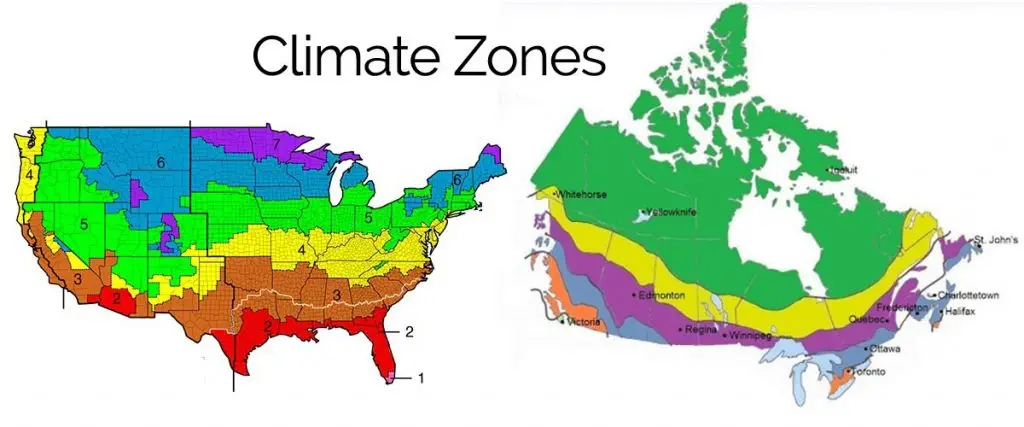
Those setting out to build an efficient, sustainable or even net-zero home in the USA or Canada, or to renovate an existing home for lower energy costs and better comfort, need to ask first; “what climate zone am I in?”
The first step to building a durable and energy-efficient home in North America, including Passive house to PHIUS standards, LEED or Net Zero Homes is knowing your climate zone. Just as we need to wear different outfits in different climates, homes need to be properly designed to meet the temperatures, humidity levels and extreme weather events of their specific climates as well.
Using information gathered from 4,775 US weather sites, in the early 2000s, the U.S. Department of Energy’s Pacific Northwest National Laboratory created a simplified map separating North America into 8 general climate zones based primarily on temperature. It was then divided into three moisture categories designated A, B, and C. Zone A being humid, Zone B being dry, and zone C Marine, where the warmest months don’t exceed 72 °F and winter temperatures range between 27 and 65 °F.
The reason we say ‘general’ climate zones above, is that there are even micro-climates that can change conditions in even as little space as between two homes side by side.
As a personal example, I recall a neighbor of mine having to remove 3 large evergreen trees very close to his home that were keeping his home in complete shade. His home was old and poorly-insulated, so it was heavily subject to weather conditions.
His home was often musty and humid he told me, and once the trees came down and the sun was able to reach his home, he was pleasantly surprised to find it less humid and the smell gradually went away. That is an example of a micro-climate, but also an example of why there are limitations to how accurate the climate zone map can be.
And to say a climate zone is based on the temperature and humidity is not the full story; it goes beyond just how hot, cold or humid it is. Each zone has a value in ‘degree days’, which refers to an annual accumulation of heating or cooling demand.
Assuming a baseline temperature of 65°F, any climate zone will have a heat load and a cooling load based on the amount of days it is above or below that point. If, for example, the temperature remains at 50°F for a 24-hour period, that would equate to 15 heating degree days (HDD). And conversely, if the temperature were to remain at 75°F for a full 24 hour period, that would equate to15 cooling degree days (CDD).
How do I find my climate zone?
Finding your own climate zone is a fairly simple matter whether you are in the USA or Canada.
- In the US, use this site to do a search by postcode or precise location here
- In Canada, take a look at this site to do a local climate zone search here
Determining exactly which climate zone you live in is an impossibly inexact science. You will see that the lines on some climate zone maps are different than on others, and they can also indicate fairly abrupt changes from one climate to the other. Since that obviously isn’t how climates and weather patterns behave, if you fall anywhere near a climate zone boundary where it changes from one to another, have a look at a few different climate zone maps, and pay attention to the next closest climate zone and use some judgement when discussing with your local building permits office.
Leave a Reply